#paeds
Explore tagged Tumblr posts
Text

A little late to the party but after seeing so many Mikus in other cultures decided to do one from my own and well I’m from Pittsburgh and let me tell you our culture is road rage
#Hatsune Miku#Miku#My Art#artists on tumblr#Vocaloid#miku in your culture#miku international#miku in my culture#miku around the world#fanart#Miku Hatsune#anime#cute#Pittsburgh#miku fanart#character design#funny#vocaloid fanart#hatsune miku fanart#PA#Pennsylvania#culture#yinzer#jagoff#black and yellow#steelers#pirates#penguins#black and gold#pitt
36K notes
·
View notes
Text
“Whether a healthy mother is responsible for a healthy child or whether a healthy child makes a healthy mother? To say one is more important than the other is an understatement.” ~ M.K. Ghandi
The Importance of Maternal and Child Health in Society: Implications for Occupational Therapy Practice
Maternal and child health (MCH) is critical not only for the health of individuals but for the broader social and economic well-being of a community. In South Africa, where access to quality healthcare can be limited in rural communities, ensuring the health of mothers and children is vital. This blog explores why MCH is so important and how Occupational Therapy (OT) practices can make a significant impact in these rural communities.
Why Maternal and Child Health Is Important to Society
Maternal health plays a vital role in the broader context of public health. Pregnant women who have access to proper prenatal care are more likely to experience safer pregnancies, healthier births, and reduced complications. The United Nations emphasises that investing in MCH reduces both maternal and infant mortality, which in turn promotes economic growth and social stability (Longdom, 2022). For example, studies in South Africa show that improving maternal health services can substantially decrease the high mortality rates associated with childbirth and infant diseases, allowing for healthier generations to contribute to society.
Investing in maternal and child health goes beyond healthcare—it’s an investment in the future of society. A child born into an environment where maternal health is prioritised is more likely to thrive in early childhood, reducing the need for extensive medical interventions later in life. Furthermore, promoting MCH leads to better educational outcomes, as healthy children are more capable of concentrating in school and engaging with their peers (Medtigo, 2021). In South Africa’s rural areas, where resources are often stretched thin, this approach is especially significant.
During the first week working in the community at Thornwood, I encountered a child with Fetal Alcohol Syndrome (FAS). This condition, caused by prenatal alcohol exposure, has severe consequences for a child’s cognitive, social, and physical development. Children with FAS often struggle with learning, impulse control, and motor coordination, making it difficult for them to function independently at school and in daily life. This highlights the crucial need for maternal health education and early intervention services to prevent and manage such conditions.
The importance of maternal and child health is emphasised by several global health studies, including reports by organisations like the World Health Organization (WHO) and UNICEF, which indicate that investing in maternal and child health yields substantial benefits (Hamza, 2024). High maternal and child mortality rates not only result in individual tragedy but also impede national development.
Implications for Occupational Therapy Practice
Occupational Therapy (OT) is an essential part of maternal and child health care, particularly at the community level, where OT practitioners can address both the physical and psychosocial needs of mothers and children. OT is centred on improving individuals’ participation in meaningful activities, which for mothers includes managing family roles and responsibilities, and for children involves play, learning, and physical development (Baker et al., 2024) At a community level, OT can help bridge gaps in access to care, support mothers in their caregiving roles, and promote optimal development for children.
OT’s Role in Maternal Health
Maternal health is an area where OT practitioners can make significant contributions, particularly in prevention, early intervention, and recovery from pregnancy-related health issues. Prenatal and postnatal care is vital for the well-being of both the mother and child. OT can intervene in areas such as:
- Providing Education and Support: OT practitioners can teach mothers about postural alignment, ergonomic practices, and exercises to reduce musculoskeletal pain during pregnancy (Rae, 2024). Educating women on the importance of breastfeeding and newborn care can also help reduce anxiety and enhance confidence, which is vital for mental health.
- Mental Health and Emotional Well-being: Postpartum depression is a common challenge that many mothers face. Occupational therapists are trained to address mental health issues by providing coping strategies and creating supportive environments. OT interventions can focus on helping mothers manage their emotional well-being by promoting routines, rest, and community support networks (Rae, 2024).
- Helping with Postpartum Recovery: OT can support mothers’ recovery post-childbirth by helping them regain functional mobility, managing the physical demands of caregiving, and teaching time management skills. For women experiencing physical challenges such as fatigue or loss of independence, OT can provide assistive devices and environmental modifications to improve daily functioning (Rae, 2024).
OT’s Role in Child Health
Children’s health is influenced by early intervention and support in their developmental stages. OT practitioners can help create programs to enhance early childhood development in areas like:
- Motor Skills Development: OT can focus on helping children develop gross and fine motor skills, which are critical for school readiness and long-term physical health. Early OT interventions help children acquire foundational skills such as walking, crawling, gripping, and drawing (Land, 2023).
- Sensory Integration and Play: Occupational therapists assist children in developing sensory processing skills through play. This is essential for children’s cognitive and social development. OT practitioners can create engaging activities that promote motor skills and stimulate cognitive functions while encouraging socialisation, emotional development, and communication (Cleveland Clinic, 2022).
- Preventing Developmental Delays: OT practitioners help identify and treat developmental delays or disabilities early in a child’s life. Early intervention can reduce the impact of disabilities and improve a child’s long-term quality of life (Land, 2023).
Community-Level OT Practice
At a community level, OT practice involves working with local healthcare workers and community organisations to enhance maternal and child health. OT practitioners collaborate with midwives, nurses, doctors, and community health workers (CHWs) to promote access to care, educate the public, and address social determinants of health. OT interventions at this level include:
- Building Community Awareness: By collaborating with local health initiatives, OT practitioners can educate the community about the importance of maternal and child health (Lassi et al., 2019). They can promote early screening for maternal and child health issues and provide resources for families on topics such as nutrition, mental health, and immunisation.
- Addressing Environmental Barriers: OT practitioners can identify and modify environmental barriers that may limit maternal and child health. For example, ensuring that homes are safe for children to play, providing mothers with ergonomic tools for caregiving, and improving accessibility to health services.
- Supporting Community-Based Programs: OT practitioners can play a pivotal role in supporting maternal and child health programs (Lassi et al., 2019). They may help design and implement community-based interventions, such as breastfeeding support groups or parenting workshops, aimed at improving maternal well-being and child development.
- Cultural Sensitivity and Contextual Appropriateness: In different communities, cultural practices may influence maternal and child health. OT practitioners work closely with local populations to respect and incorporate cultural beliefs into their interventions while still promoting healthy practices. Community engagement and understanding of cultural contexts are critical for effective OT practice in maternal and child health.
Conclusion
Maternal and child health is not only vital for individuals and families, but also for the health and development of society as a whole. Ensuring healthy pregnancies and childhoods leads to healthier populations, more productive economies, and socially stable communities.
Occupational Therapy, particularly at the community level, plays a crucial role in improving maternal and child health by providing education, support, interventions, and early detection of health issues. OT’s ability to address both the physical and mental well-being of mothers and children ensures that the entire family can thrive, ultimately leading to a stronger society.
Investing in maternal and child health at a community level can help close healthcare gaps, empower women, reduce poverty, and promote gender equality, all of which contribute to sustainable development. As Occupational Therapy practitioners, we must continue to work collaboratively with communities to enhance the accessibility and effectiveness of maternal and child health programs, ensuring a healthier, more prosperous future for all.

Image taken from https://fastercapital.com/topics/addressing-maternal-and-child-health-in-developing-countries.html
0 notes
Text
Here’s a video so you can hear the water and the thrushes. I took it for you because you couldn’t be there. <3
#geopsych video#pennsylvania#landscape#sunlight#sunlight through mist#june#nazareth borough park woods#nazareth pa#wood thrushes singing
154K notes
·
View notes
Text
saying ao3 needs to censor certain content is like saying a museum can't have still life art that includes strawberries because you don't like them.
these are not real strawberries. you do not have to, and in fact cannot, eat them. no one with a strawberry allergy will be harmed by looking at them. no migrant workers were exploited in the picking of these strawberries. there were no questionable farming practices or negative environmental impacts from growing or transporting them.
because - and i cannot stress this enough - they are not real strawberries.
if you don't like strawberries, you don't have to look at the paintings. in fact, you can get a map of the museum that lists what works are in what rooms and just. not go in there. if you see one by mistake, you can look away. just keep walking. there's plenty of other stuff to see.
yes, real strawberries can cause real quantifiable harm to real people.
but again. these are not real strawberries.
you may have whatever feelings you like about strawberries, and so can i. you can draw and write about whatever fruit floats your boat, and so can i, even if that happens to be strawberries. and we can hang our art side by side in the same gallery, provided you understand that my strawberries are not about you (and your kumquats are, shocker, not about me) and that - and this is true - neither are real.
and when the fascists break down the doors and grab all the strawberry paintings and heap them in the street and set them on fire, please know that they are coming for your kumquats next.
so if you want a place where you can show off your beautiful kumquat art safely, you're gonna have to tolerate having some strawberries in the next room.
and that's okay. because the strawberries aren't real.
18K notes
·
View notes
Text

Ok, just imagine
Danny using his ghost powers to learn astronomy (and actually discovering new aspect of his powers w/out realizing)
(post with secret eheheh)
#danny phantom#danny fenton#dp fanart#art#it is literally half pas two at night#I forgot how to write#and I wanna draw more Danny but I need to get some fucking sleep#good time of the day to everyone
4K notes
·
View notes
Text

2K notes
·
View notes
Text
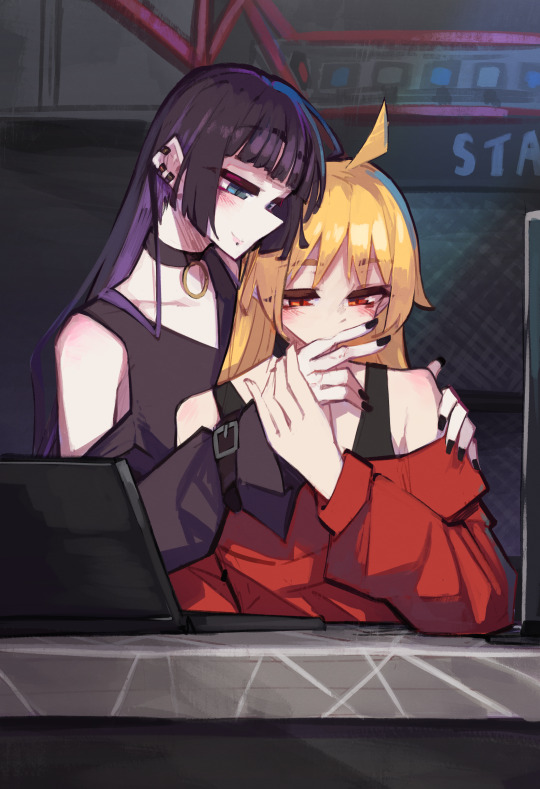
5K notes
·
View notes
Text

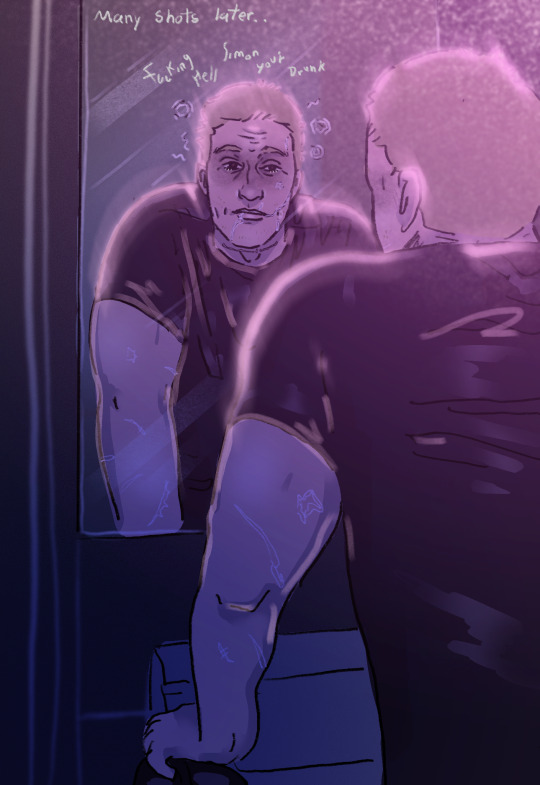
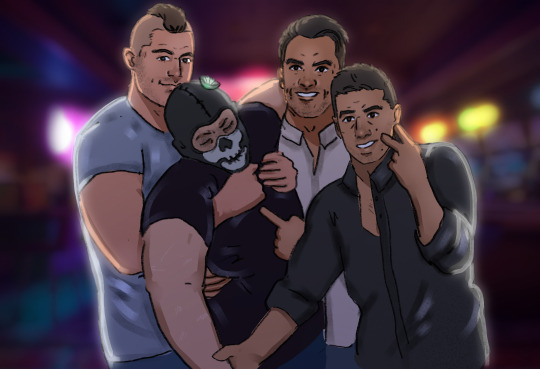
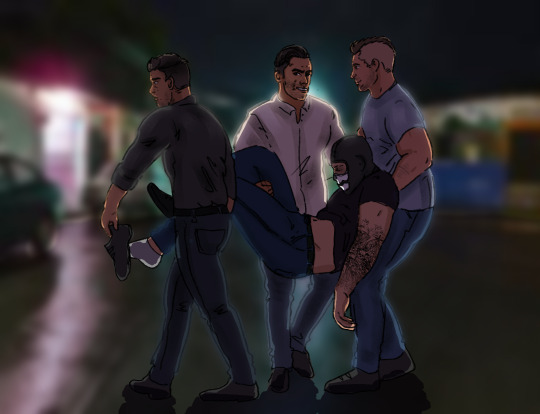
Ghost thought he could drink at the same level as two mexicans and a scotsman.
#call of duty#john soap mactavish#simon ghost riley#ghostsoap#soapghost#call of duty modern warfare#ghost call of duty#cod mw2#ghost cod#alejandro vargas#alerudy#rodolfo parra#rudy parra#si ya saben como me pongo pa que me invitan#soap cod
3K notes
·
View notes
Text
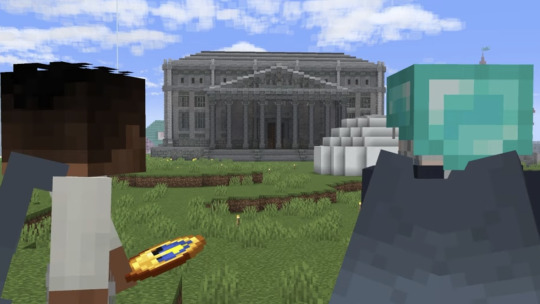
hm ok so interestingly, bdubs’s courthouse is built on an odd number of blocks. note the roof of the facade coming to a point, but more importantly, the nine pillars….
you don’t use an odd number of pillars. like ever.
let me get this out of the way first: i get why you’d build with odd numbers in minecraft. i usually do it myself, to not run into problems like double doors or two-wide pointed roofs or frustrating spacing/symmetry between decorative elements. however. to not even out the design of something so unequivocally done in every other example of columns and pillars…. fascinating implications…



every other example guys. every other building with columns like this has an even number of them.
doing so sets the line of symmetry at an invisible point between two pillars, an even number on each side. but an odd total number of pillars makes the central pillar itself the line of symmetry. this does a couple things.
one, it upends the sense of community and equality. which i know sounds crazy, but really, a group of columns are all put there to hold up a structure. there’s no focus on one because they are all are working as supports.
symbolically, at least when first used in ancient greece, pillars represented people. and it makes sense for courthouses, especially, to want to show an even, fair, equal number of people on each side. no focus on any one, no inherent bias right off the bat just looking at it.
with an odd number of pillars, though, one will always be placed front and center.
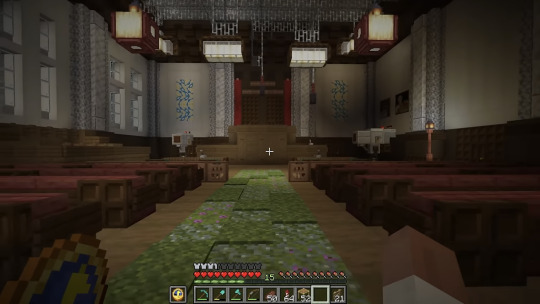
and THEN. and then you walk in the courtroom itself (also odd-numbered blocks) and you are immediately opposite the judge, bdubs, located exactly centrally. and true, courtrooms are often set up like this anyway. but bdubs ups the ante and reaffirms that no, focus is on him by staging it all as a daytime court show, boom mic just over his head, cameras pointed in, spotlights on him.
literally by design, it was not built for justice. it’s built for show, for entertainment. and just look at the credits to know exactly what sort of message you’re supposed to be getting from this show.
the biblical story he used, with king solomon. it’s about king solomon. isn’t really about the trial itself, or the babies, or the women. it’s about showing (off) how wise and just he is. that’s the point. hm. interesting.
now, getting to the second point that etho also picked up on: it feels like a prison.
it’s not just the color palette. when your eyes naturally draw to the center point, you aren’t seeing an open space. instead of feeling like an arch or gateway or otherwise some kind of opening, the pillar there makes it feel closed off. the overall effect is that of prison bars. not pillars lining the entrance to a place of order or a temple. bars of a cage, a cell.

imagine the lincoln memorial were set up with 11 or 13 pillars. he’d look so much more trapped in there.
having a central pillar blocks the entrance. it’s not welcoming. you have to go around it; it’s immediately inconveniencing you. and when you go to leave, it’s there blocking you again.
this courthouse was not designed and built to be fair, nor accomodating, nor equitable, on any terms. even if unintentional, i wouldn’t call it so much coincidental as i would… subconscious.
after all, y’know. form follows function.
#this came about by me being like ew why are there an odd number of pillars that’s such a faux pas and just overall odd (haha) choice#but then i was like oh wait. there’s something to this#i dont think it looks BAD. i just think that odd number of pillars causes problems and maybe it doesnt stick out to other people as much#but it bothers ME. okay#bdubs#bdoubleo100#hc10#hermitcraft#mightaswellspeak
6K notes
·
View notes
Text

#personal#meme#the treachery of images#rene magritte#this is not a pipe#id in alt text#ceci n'est pas une pipe#now that's what I call music#had to make this#just had to#ETA: the bottom right corner looked empty#so I added magritte's signature#I think it balances it out
22K notes
·
View notes
Text
Thomas: Son, I have a dark family secret I have to share with you.
Bruce nodding: I'm adopted
Thomas: That's not it.
Bruce nodding: I'm actually the biological son of Alfred and Mother, but you raised me as your own anyway.
Thomas: No
Bruce side eyeing him: You stole me from a park when I was little.
Thomas: No! Geez, you think I would pick you out of all the park kids?
Bruce: Hurtful but fair. What's the secert then?
Thomas: We stole your bother Danny from a park when he was little.
Bruce: No! Not little Danny! He likes the stars father! He was innocent!
Thomas: I know! But I couldn't stop Martha or Alfred! Oh my dear son, I have lived with shame for years! I can take it no longer!
Bruce: You must turn yourself in father. Face justice for what you've done!
Danny standing three feet away: I'm was kidnapped?
Martha: Meh, you fell through a glowing portal of death, and when everyone ran away screaming, Alfred and I just scooped you up and took you home. Thomas doesn't believe us about the portal, though, and has been trying to find your birth family for years.
Danny: Is that why he keeps asking for me to do DNA tests?
Alfred: Yes. Master Thomas fancies himself a detective.
Martha: What's so unbelievable about a glowing white-haired teenager falling from a swirling portal of death and shrinking into a few months old human baby due to his terrible injures? Storks bring babies all the time!
Alfred: I just think Master Thomas isn't as well traveled as he should be. I've seen the same protal at least five times back in London.
#dcxdpdabbles#dcxdp crossover#from a fic i never wrote#Danny de-age and adopted by the Waynes#Thomas/Martha/Alfred ship#Thomas is convinced his partners stold a baby#but raised him as his own anyway#Bruce and Thomas are copies of eachother#Danny took more after his Mother and Pa
2K notes
·
View notes
Text

Snow update, still falling.
2K notes
·
View notes
Text
For some reason I am so amused at the idea of Clark going to Ma and Pa Kent to tell them he's getting engaged/married to Lois and them both kind of just standing there awkwardly trying to figure out a Midwestern-nice way to kindly, but firmly, ask Clark what the fuck is going on with that Batman fellow, then--
#look the thing is#they're in some weird convoluted throuple#lois and clark are getting happily married#bruce is There#everyone is happy#but it's too much for poor ma and pa kent#batman#bruce wayne#dc#clark kent#superman#clois#cloisbat#lois lane#superbatlane#superbat#sorry @ the anon who sent me the other ma and pa kent ask#I got distracted and didn't want to spam your post with my cloisbat thoughts
2K notes
·
View notes
Text
when Clark was a baby and first learning to walk, Jonathan would always follow close behind with his arms out, ready to pick Clark up the second he tripped and fell (as all babies do when learning how to use their legs)
30 years later, when every time he watches his boy—Superman—leap from the front porch and take to the sky, he still feels his arms twitch with the urge to reach out and catch, just in case. even if it’s unlikely that Clark will ever fall again.
2K notes
·
View notes
Text
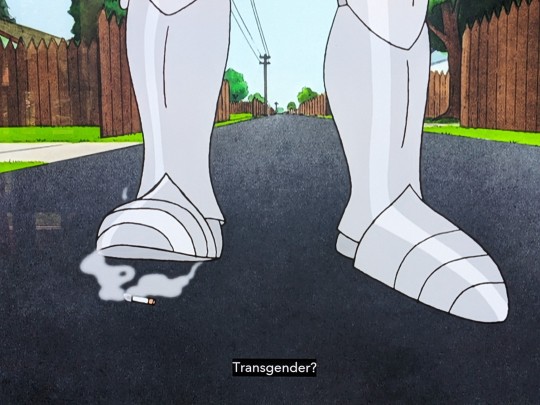
Paused King of the Hill on an interesting frame
#king of the hill#dale gribble#rusty shackleford#armor#armour#transgender?#transgender#cw cigarettes#tw cigarettes#out of context#s8e9#Ceci N'Est Pas Une King of the Hill
16K notes
·
View notes